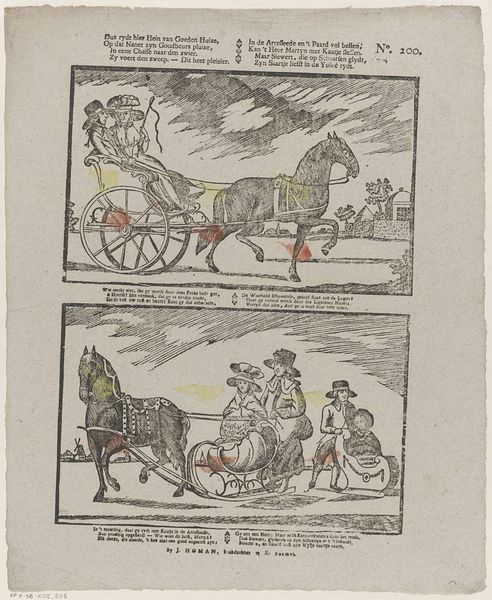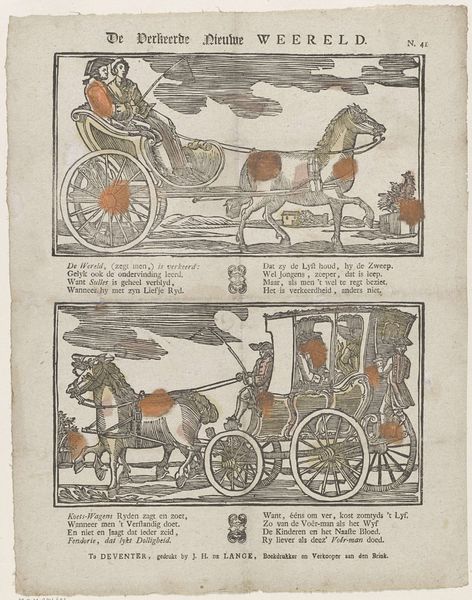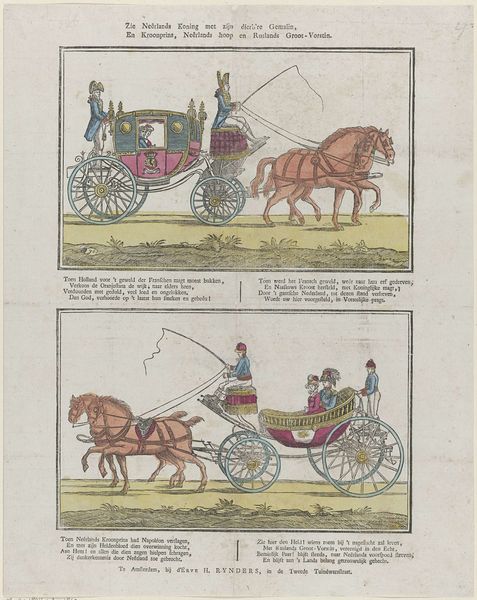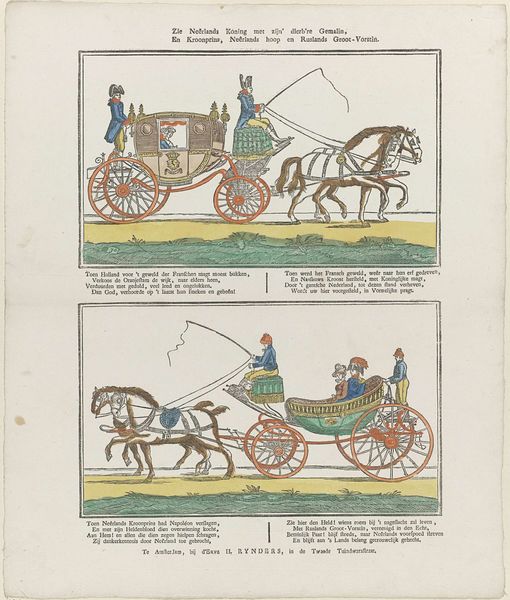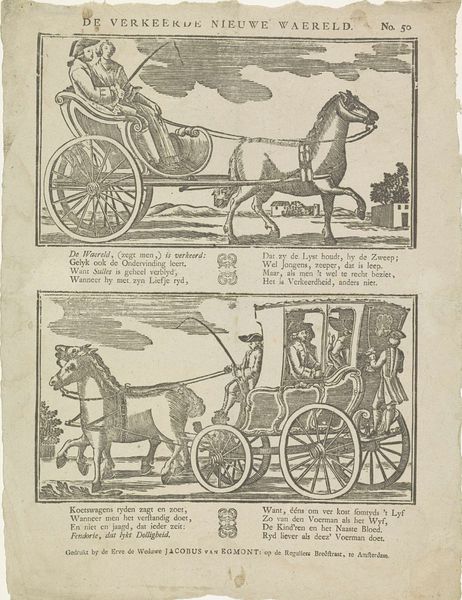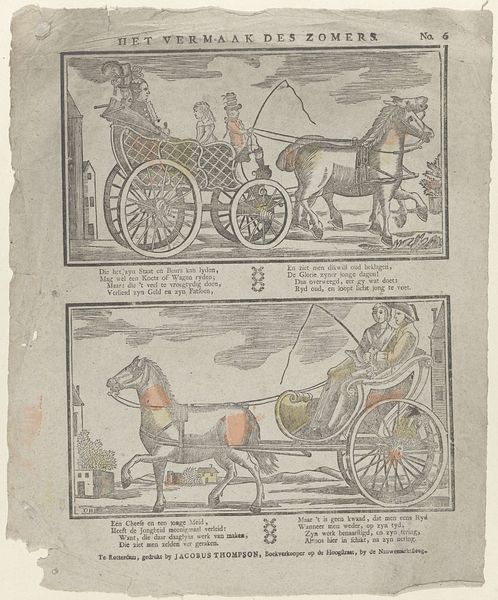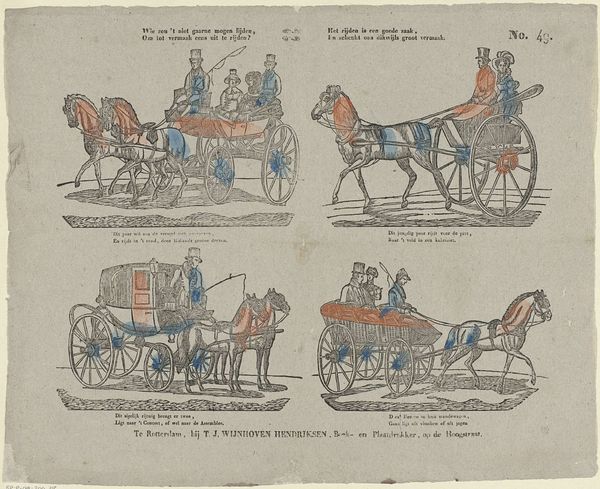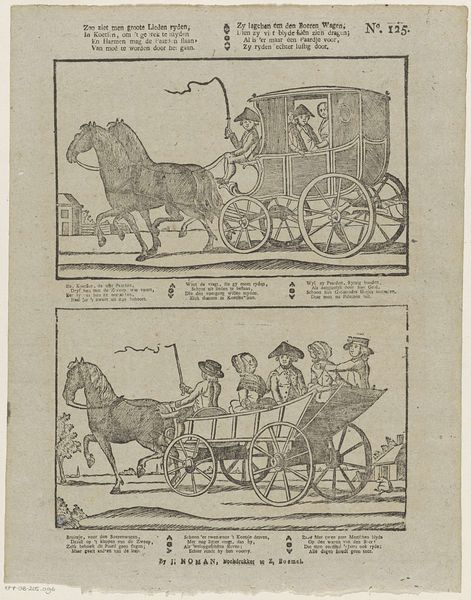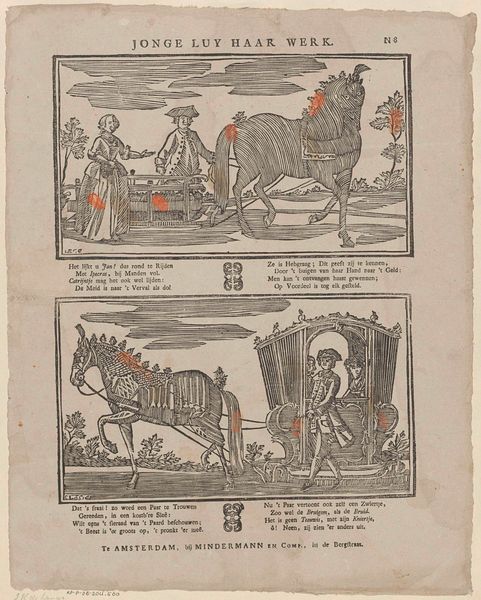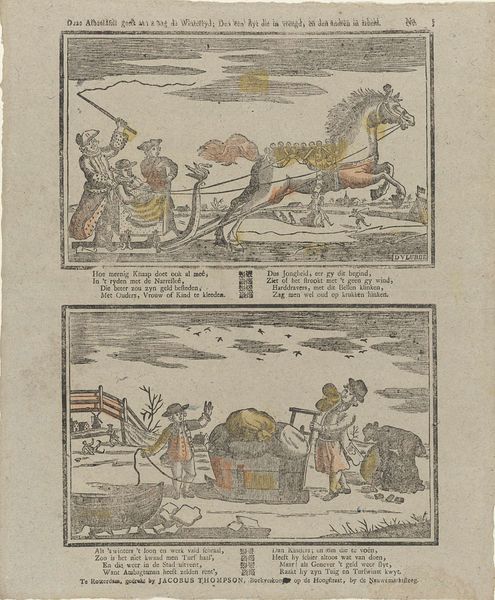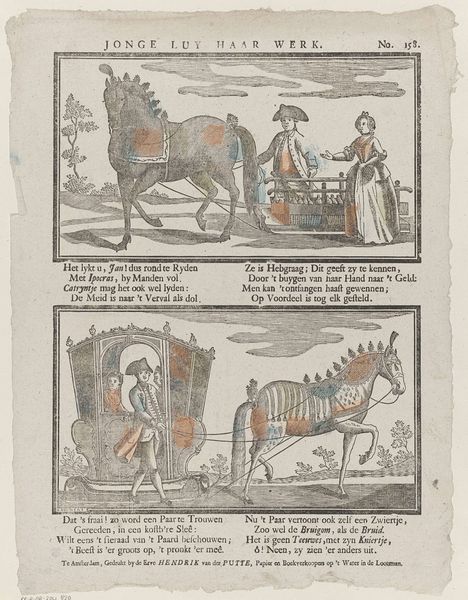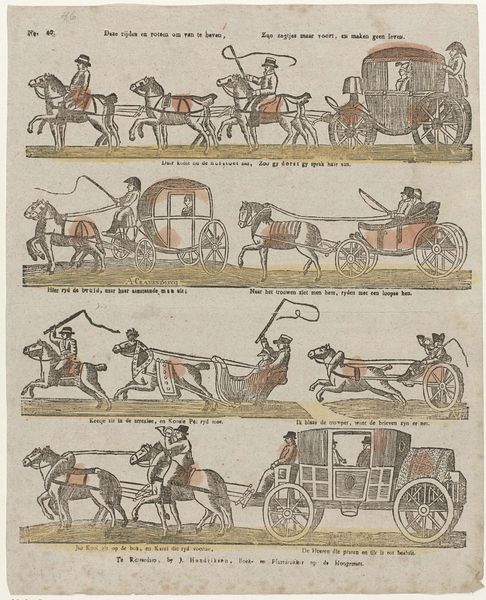
Zie Neêrlands, koning met zijn dierb're gemalin, / En kroonprins, Neêrlands hoop en Ruslands groot-vorstin 1831 - 1854
0:00
0:00
print, engraving
# print
#
genre-painting
#
history-painting
#
engraving
Dimensions: height 415 mm, width 325 mm
Copyright: Rijks Museum: Open Domain
Editor: Here we have a print titled "Zie Neêrlands, koning met zijn dierb're gemalin, / En kroonprins, Neêrlands hoop en Ruslands groot-vorstin," by Jan (Sr.) Oortman, dating from sometime between 1831 and 1854. It appears to be an engraving. I am struck by the symmetry of the composition, two carriages presented one above the other, almost like reflections. What stands out to you? Curator: The diptych structure certainly creates an immediate visual relationship ripe for comparison. Note the parallelism in form—the near-identical framing, the mirroring of the horse-drawn carriages—which points towards a structural dichotomy the artist is eager for us to decode. Editor: A dichotomy? In what way? Curator: Consider the application of color. The upper carriage exhibits a lightness, an almost pastel quality, absent in the somber hues below. Is this a symbolic play with contrasting aesthetics? Is the upper carriage more ornamented? Or perhaps each choice accentuates their divergence and offers insight into its intended meaning. What do the stylistic choices tell you? Editor: Well, the lines of the lower carriage appear much bolder, giving it a weightier presence, and perhaps symbolizing the hardships or burden that carriage carries compared to the lightness and elegance of the carriage above? The symmetry contrasts through its subtle lack of symmetry... Curator: Precisely. Notice too, how Oortman guides our eye, the horses and carriages mirroring each other. The organization creates a formal unity on the surface but a deeper chasm beneath, ripe for interpretative work. It certainly allows one to explore varying formalist avenues for interpretation. Editor: I see it now! The composition itself sets up a narrative without explicitly telling a story, just through visual cues and contrasts. I will consider that as I examine this print going forward!
Comments
No comments
Be the first to comment and join the conversation on the ultimate creative platform.
